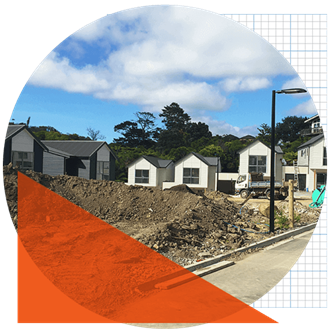Bridging the gap, with bridging finance
In a nutshell, bridging finance is a short-term home loan that allows you to purchase a property before selling your existing one, making the moving process smoother, and more feasible.
Ready to get started?

Why get bridging finance?
A bridging loan is a second short term home loan which allows home owners to buy a new property before selling their existing one. This takes the stress out of trying to line up the sale of the existing house with the purchase of the next.
There are usually a few hoops to jump through to get bridging finance, but we're here to make it easy.
For those that don't quite fit in the 'bank's box' Squirrel have designed our own bridging loan.

Expert advice
We’ve been around the block a few times, so there’s not much we haven’t seen. Tell us your situation and we'll make recommendations to suit.

More choices
We deal with more lenders than other brokers, giving you more options.

Our advisers aren't incentivised
They're paid the same no matter which lender you end up with, so you know you won't get pushed into a loan you don't want or can't afford.

Better mortgage rates
We’ve got negotiating power and access to better rates, so we can make sure the long-term mortgage ends up on a hot rate.

How much does a bridging loan cost?
Taking on a bridging loan is an added cost on top of the existing mortgage you’re paying, so banks will look closely to make sure you can afford both loans at the same time.
Bridging loans are set on the floating rate that’s advertised at the time which is higher than the lower fixed rates, but they can be on interest-only terms so that you don’t have to pay the principal during the bridging period. Once the existing property sells and the mortgage is repaid, the leftover balance is fixed.
The main banks tend to be the cheapest option for bridging so your mortgage adviser will approach your bank first. If they aren't prepared to bridge (which is often the case), we have our own bridging loan to consider.
There are two common types of bridging loans
1. Open bridging loans
If you're wanting to buy before selling, you'll be looking at getting an open-ended bridging loan. Buyers looking to borrow open bridging loans are seen as a greater risk to lenders, because they’re generally unable to provide a definitive date of when their property will be sold by, (therefore when they'll be able to repay the entire loan).
This means that the process of securing an open bridging loan can be more extensive and often require more equity in your property.
2. Closed bridging loans
Closed bridging finance is for home sellers that have already finalised their sale terms and lenders prefer this scenario as it has less risk. That's because there's a predetermined date that the house will be sold, which also means a date that the loan will be fully repaid.
Squirrel's own bridging product
For those that don't fit in the 'bank's box' (which can often be the case when it comes to bridging), we have our own bridging loan product. Read about it here.

Things to consider before taking on bridging finance
If you’re planning on selling your place and buying another, here are a few questions to ask yourself to make sure bridging finance makes sense for you. If you’re unsure, we’re happy to help – just give us a call on 0800 21 22 30.
Do you already have an unconditional offer on your existing home?
Chances are, you’ll be much more comfortable taking on bridging finance if you already have an unconditional offer on your current property. This means that you will know how much money you can borrow and when you can repay the loan, reducing your personal risk.
What happens if your home sells for less than expected?
We hope that it doesn’t happen, but there’s always a chance that your home might sell for less than you’d hoped. It’s worth thinking about so you can have a strategy in place to make sure you aren’t suddenly burdened with more debt than you can afford.
Do you have a plan in place if your home takes longer to sell than expected?
When you take out bridging finance, you want to be able to commit to a predetermined bridging period. If your home takes longer to sell than you expected, you might not be able to meet the terms of your loan. We can help you put together a backup plan, just in case.
Can you afford to pay for two loans at the same time?
When taking on a bridging loan you need to factor in paying your existing mortgage, plus the potential repayments on the bridging loan, without being reduced to two-minute noodles every day for a month. We can help you work this out.
Keep up to date with the latest insights and tips
All articlesWhat is bridging finance and how does it work?
Anyone that’s moved properties knows just how exhausting it can be. Between getting your place on the market, headin...

50 reasons to use a Mortgage Broker
One of the questions you might have if considering a mortgage broker for the first time is, why use a mortgage broke...
Five reasons to review your mortgage now
A mortgage isn't something you set and forget. It should be reviewed regularly with the ups, downs, plot twists of l...

We work with all the banks
Plus a network of over 5,000 peer-to-peer lenders
Not only do we have access to more banks than other brokers, but we have a community of over 5,000 peer-to-peer lenders for a custom solution if you don't quite fit the bank's box.






